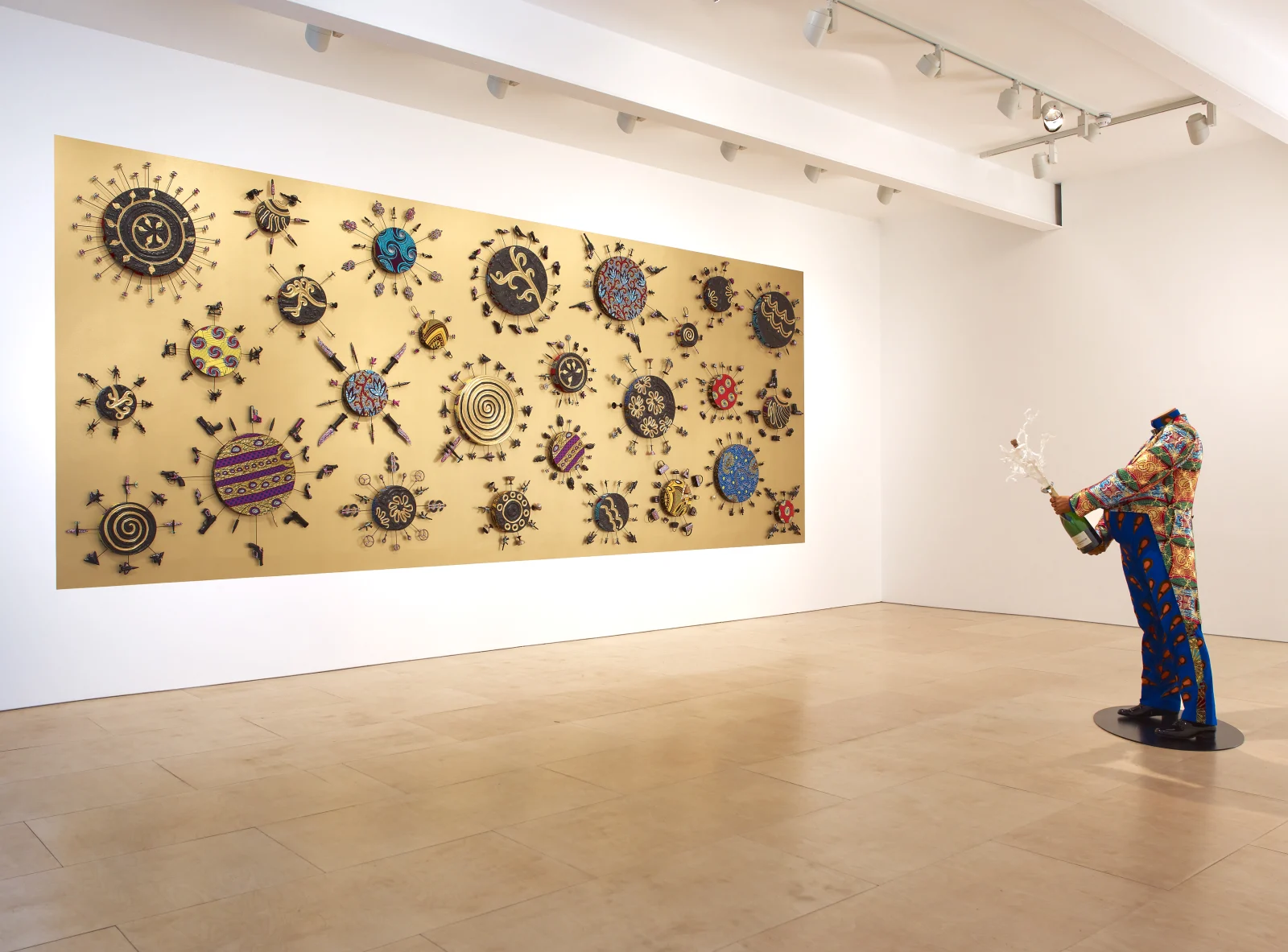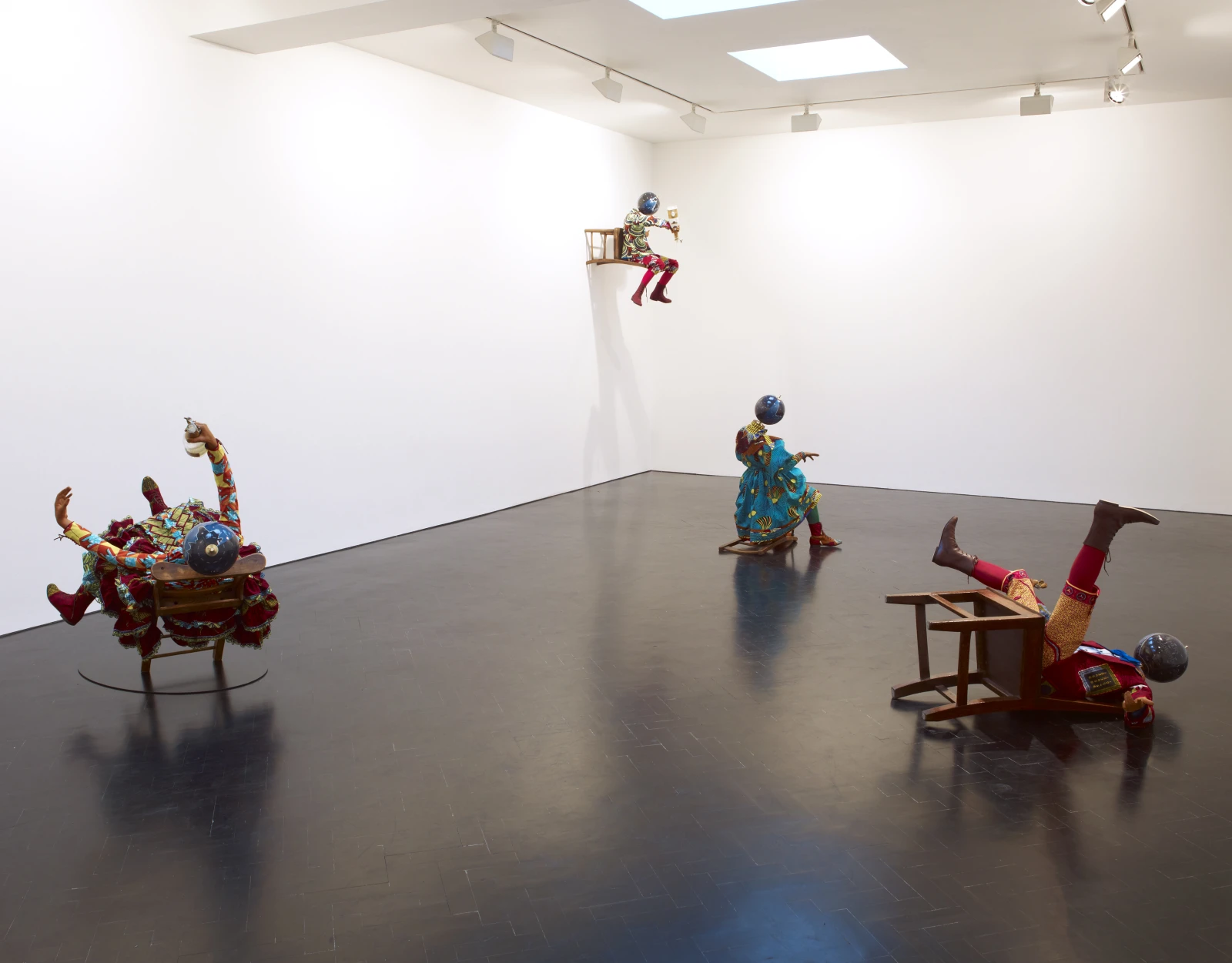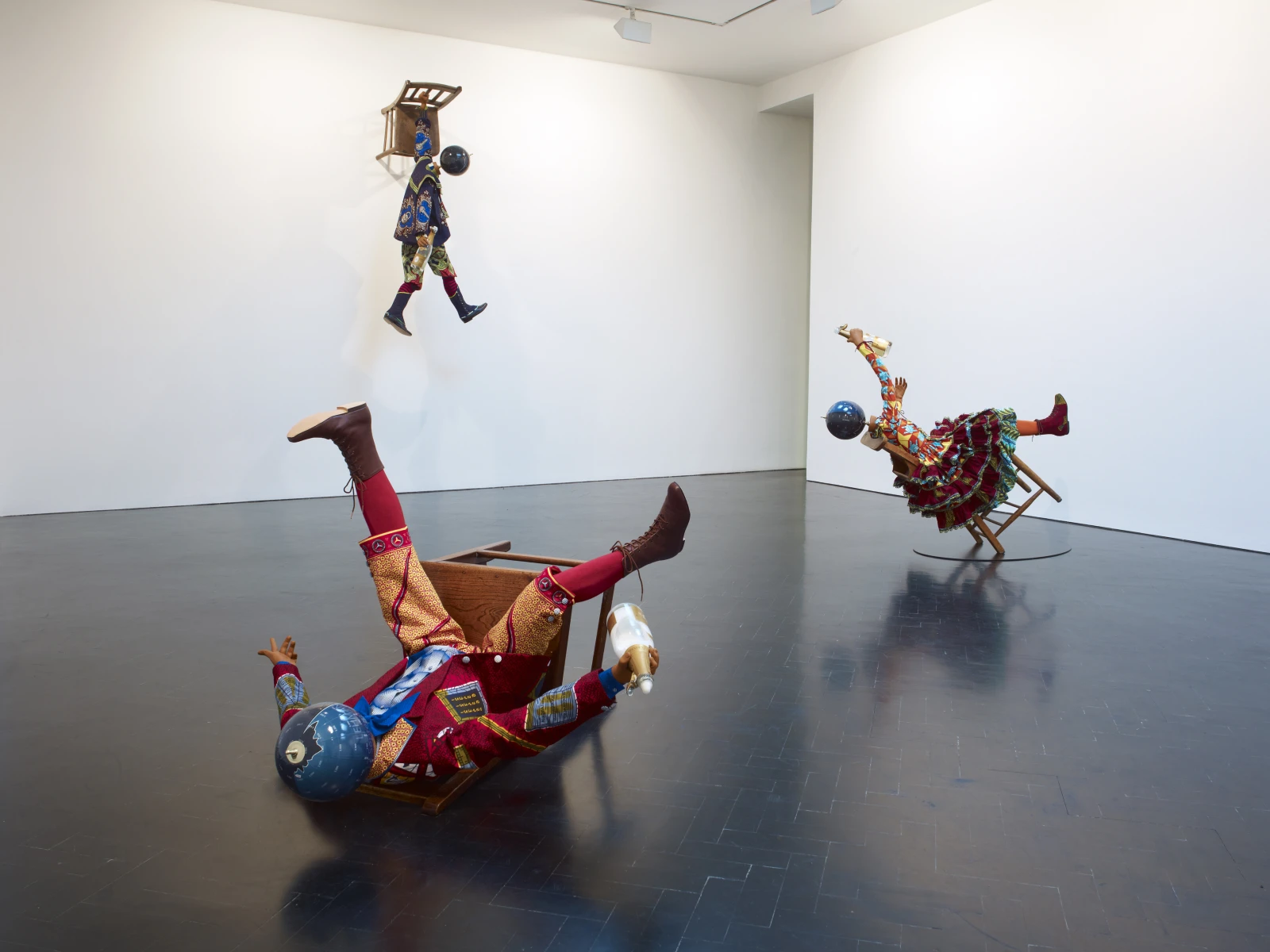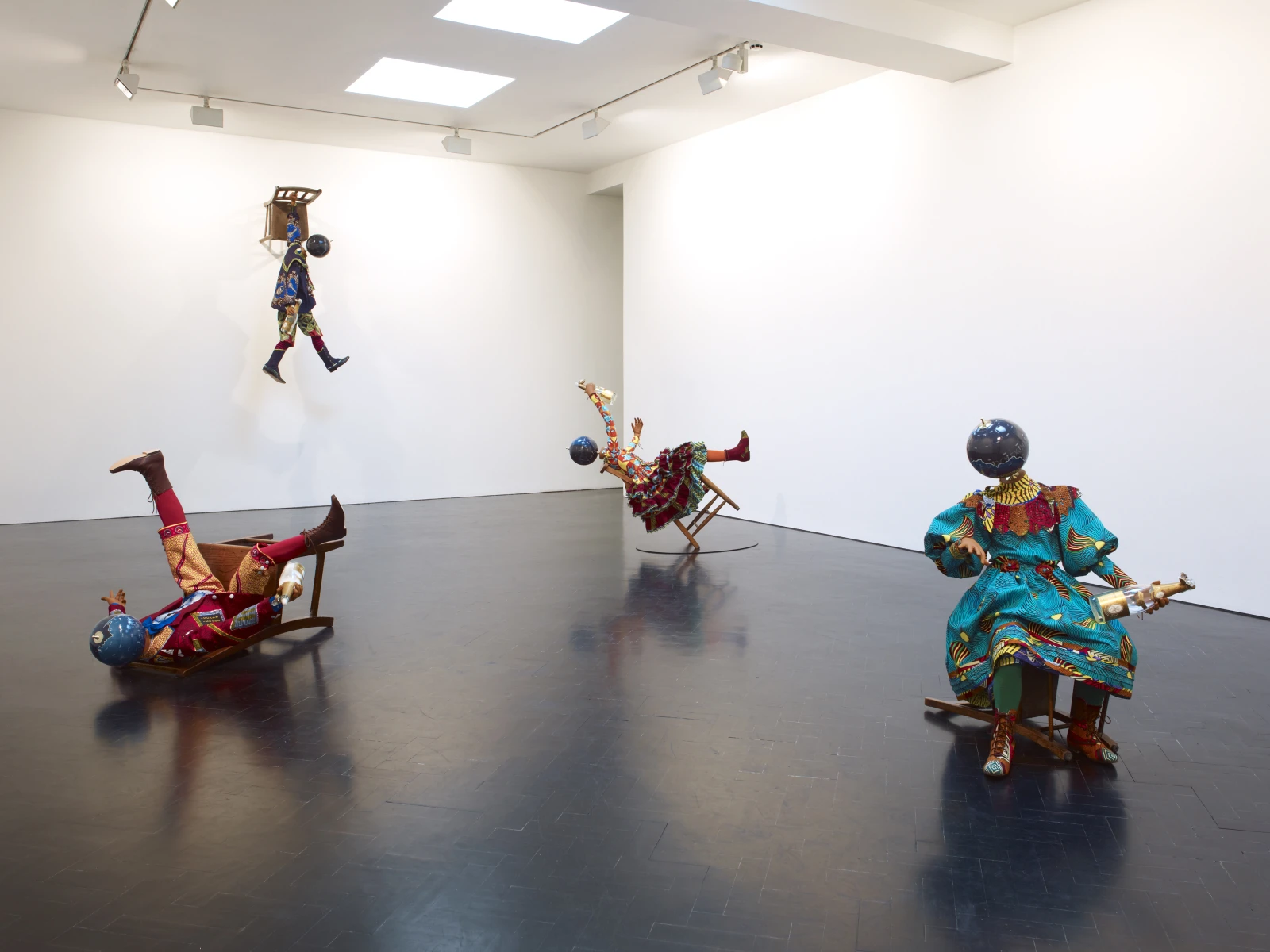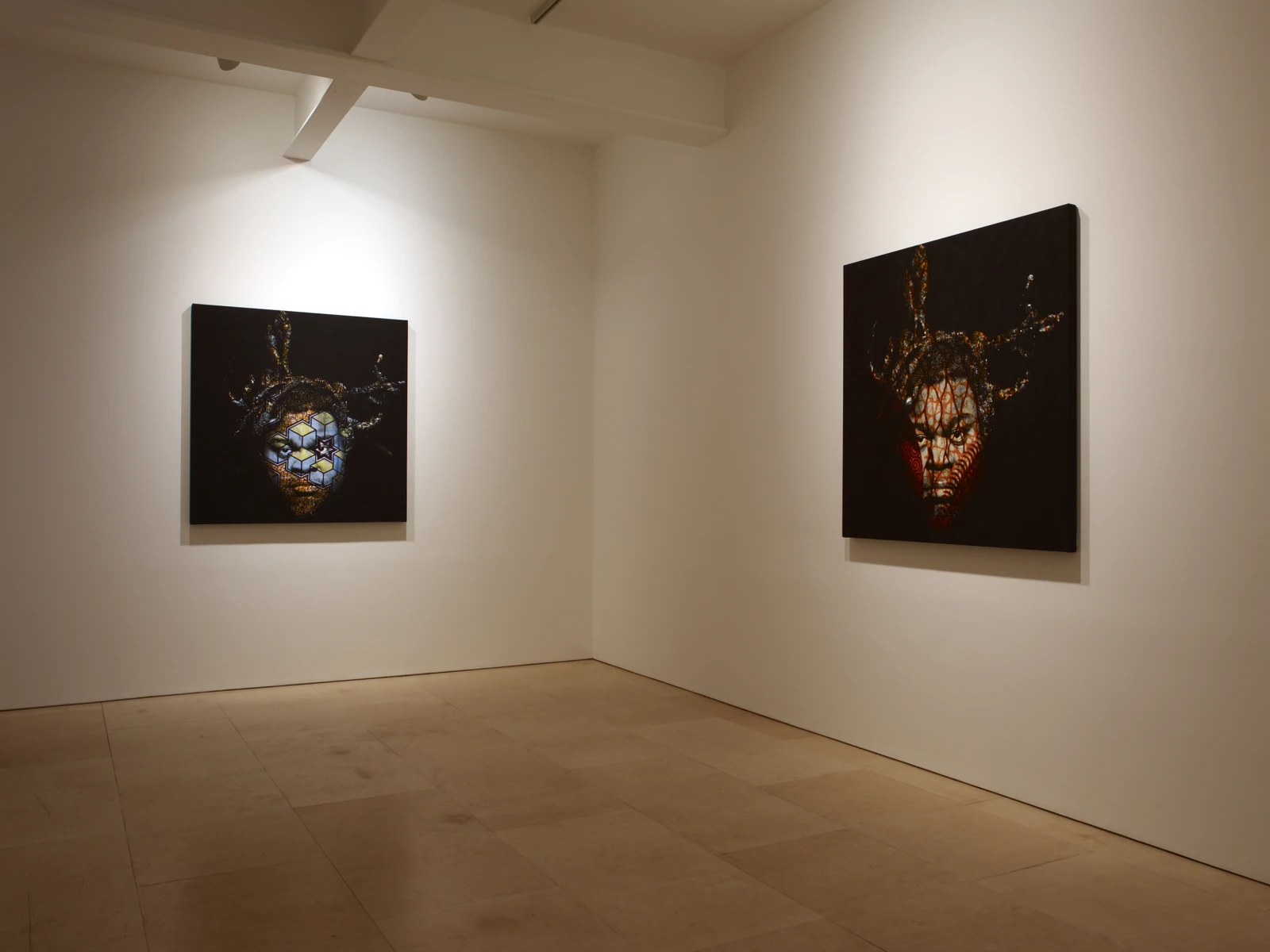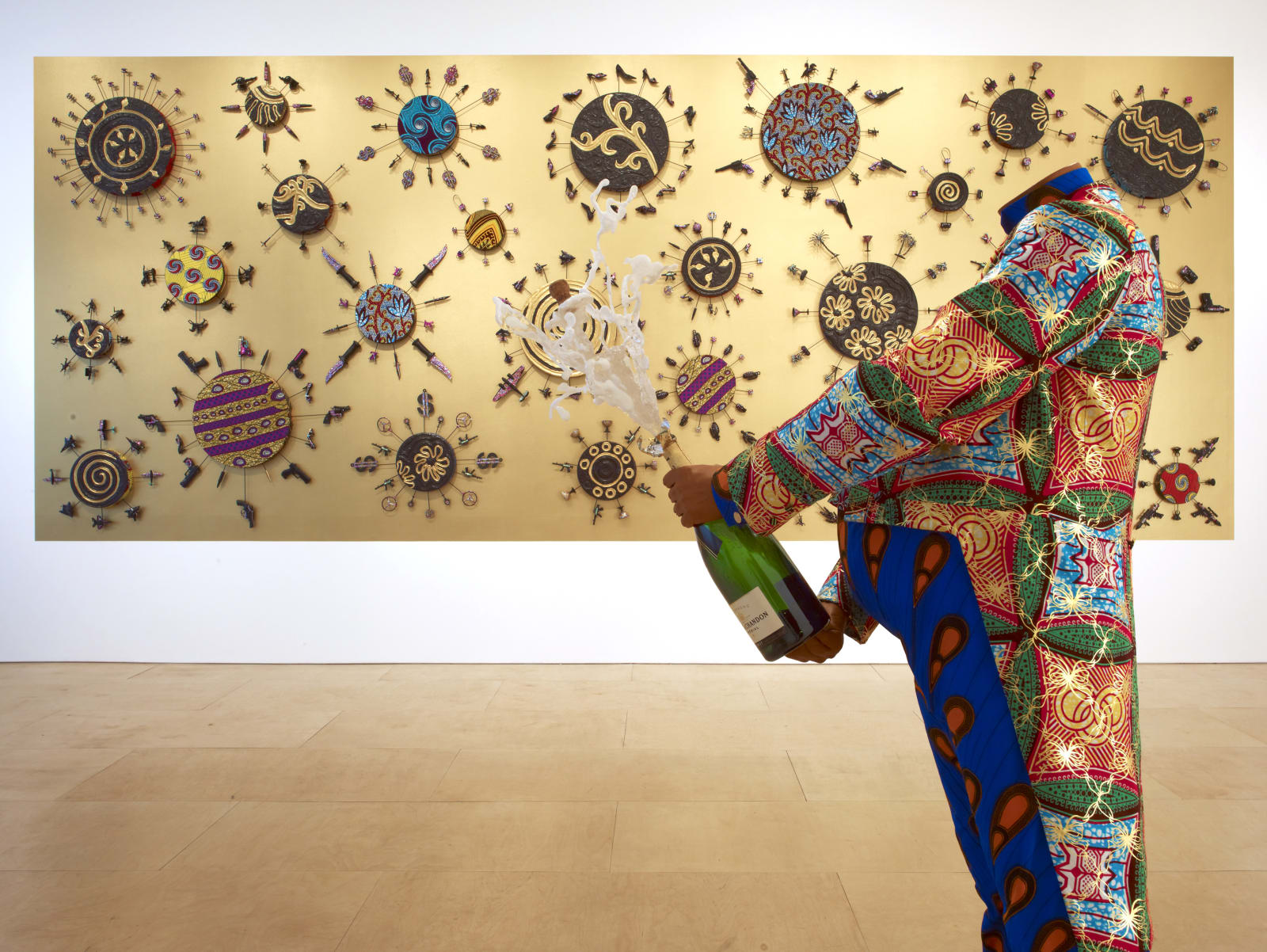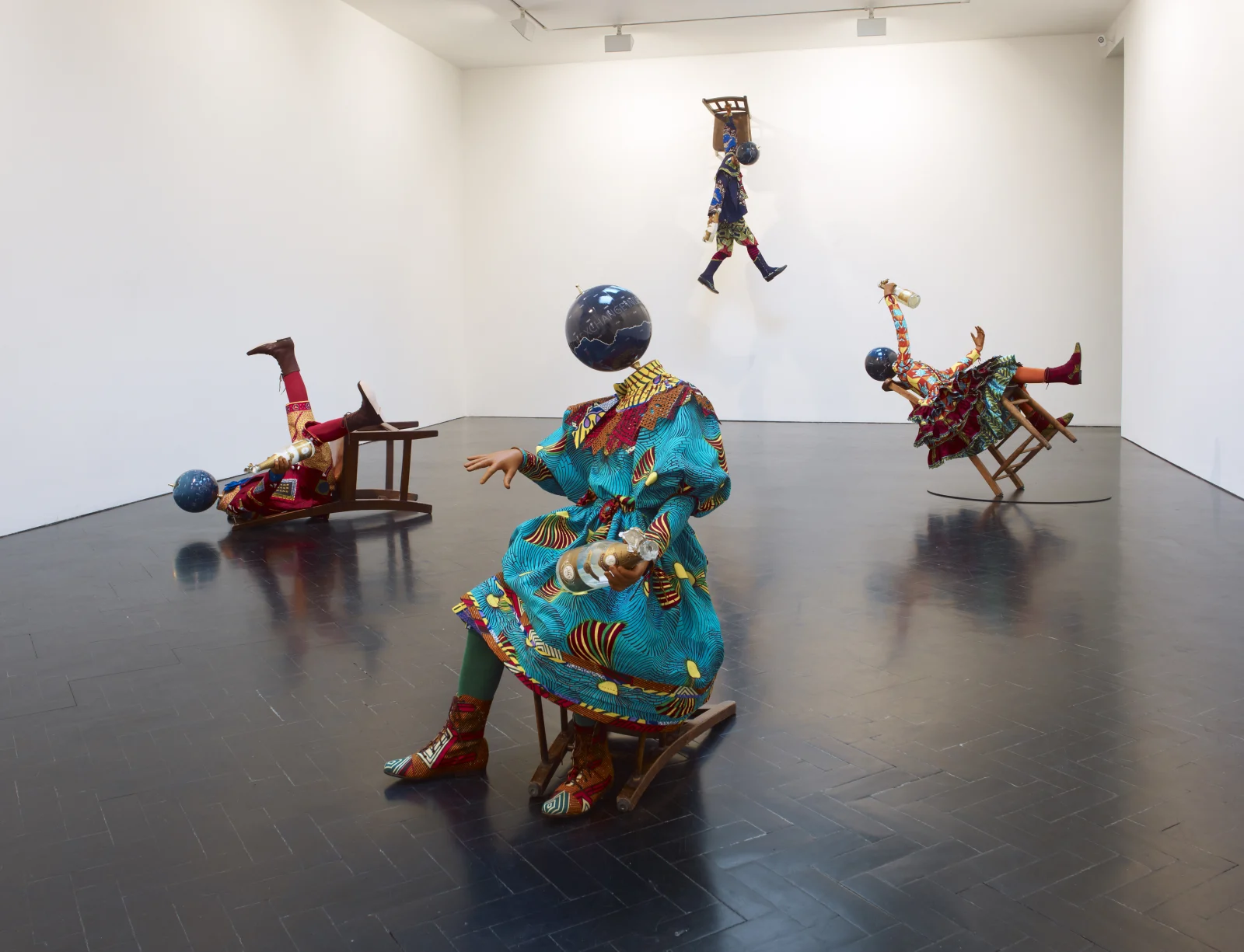
Yinka Shonibare, MBE: POP!
Overview
POP! not only presents some of Shonibare’s most ambitious work of late but also reflects the artist’s engagement with social commentary.
Stephen Friedman Gallery is delighted to announce a solo exhibition of new works by Yinka Shonibare, MBE. This exhibition of all new works focuses on the corruption, excess and debauchery that have in part led to the current economic crisis.
With characteristic wit and critique, Yinka Shonibare explores the contemporary worship of luxury goods and the behaviour of the banking industry while referencing well known iconography and art historical homage – most notably in his creation of a large tableau based on Leonardo da Vinci’s ‘The Last Supper’.
Stephen Friedman Gallery is delighted to announce a solo exhibition of new works by Yinka Shonibare, MBE.
This exhibition of all new works focuses on the corruption, excess and debauchery that have in part led to the current economic crisis. With characteristic wit and critique, Yinka Shonibare explores the contemporary worship of luxury goods and the behaviour of the banking industry while referencing well known iconography and art historical homage – most notably in his creation of a large tableau based on Leonardo da Vinci’s ‘The Last Supper’.
POP! not only presents some of Shonibare’s most ambitious work of late but also reflects the artist’s engagement with social commentary. It heralds a new direction for the artist with large-scale self-portraits inspired by Andy Warhol’s 1986 series ‘Camouflage’. The exhibition provides a unique opportunity for audiences to assess Shonibare’s most recent lines of enquiry.
The centrepiece of the exhibition is the artist’s largest and most complex sculptural tableau: a subverted depiction of Leonardo da Vinci’s ‘The Last Supper’ where Bacchus replaces the central figure of Christ. The Roman god of wine is here transformed into a headless satyr: half-man, half-goat. Surrounding him at this debauched banquet are his twelve beheaded disciples cast in poses of sexual and animalistic abandon. In homage to da Vinci, and filtered through the lens of Victoriana, the scene unravels as the Dionysiac climax of a pan-historical hedonistic party. By removing the figures’ heads, a recurring motif in Shonibare’s work, the artist dissuades associations of race. We are also reminded of the executions of the barbarous French Revolution: a period fittingly remembered for its corruption and excess. In direct reference to the celebratory excesses of the banking world, these debauched guests have cast their work troubles aside with no care for tomorrow; scattered across the table is the debris of a lavish feast of both glutton and luxury. This dramatic tableau is a moment frozen in time, inviting us to walk around and marvel at its exuberance.
Furthering the sense of an over-indulgent party, a sharply suited banker is displayed in another room, simulating the act of masturbation with an exploding magnum of champagne. Deliberately brash and humorous, the work combines the light and the dark inherent throughout the exhibition. The corruption caused by obscene amounts of money still carries its scars today as the hangover of the party remains to be cleared up. This contrasting depiction of celebration and depravity is continued in a new series of works entitled ‘Champagne Kids’. These youthful figures each carry a bottle of champagne ready to pop and in the place of their heads are Shonibare’s trademark globes, displaying financial data relating to the global economic crisis. Combined with the carnivalesque poses of the figures, they present a powerful commentary on our current state of affairs, as generations suffer the consequences of the banks’ over-indulgence.
The second part of the exhibition builds from ‘The Last Supper’ by further exploring ideas around the contemporary worship of commodities. Here, the artist’s most intricate wall painting is presented in alluring visual opulence. In reference to Shonibare’s ‘Toy Paintings’, the installation includes a number of round fabric canvases framed by a multitude of different toys. The toys relate to key themes of war, luxury and religion: toy guns, military figurines, shoes, handbags, faux diamonds, crucifixes and the Holy Grail. Spray-painted black, the toys are studded with diamantes creating silhouettes against the vivid gold of the mural behind. The
multitude of swirling panels come to represent the fetishisation of war and money, as we simultaneously desire and repel such objects of glittering beauty.
Throughout the exhibition Shonibare uses his trademark wax batik fabric in the tailored outfits of the figures and the canvases of the mural. The material is a poignant interception of our modern and colonial times: inspired by Indonesian design, mass-produced by the Dutch and eventually sold to the colonies in West Africa. The fabric has become emblematic of his practice, closely tied to his own self-recognition as a ‘post-colonial’ hybrid. For the first time here, the colours and patterns of the material are used in a group of large-scale self- portraits based on the iconic Pop Artist Andy Warhol’s ‘Camouflage’ of 1986. Militaristic and haunting, the artist’s face is so closely blurred with the patterning of the wax batik that despite its immediate familiarity, he becomes instantly anonymous. As with the other works in the show, the self-portraits are a potent reminder of the illusory boundaries of protection and danger, so closely aligned with power and money.
The exhibition coincides with a major career retrospective at Yorkshire Sculpture Park which includes new and critically acclaimed work from 2002 – 2013 and runs 2 March – 1 September 2013.
POP! not only presents some of Shonibare’s most ambitious work of late but also reflects the artist’s engagement with social commentary.

